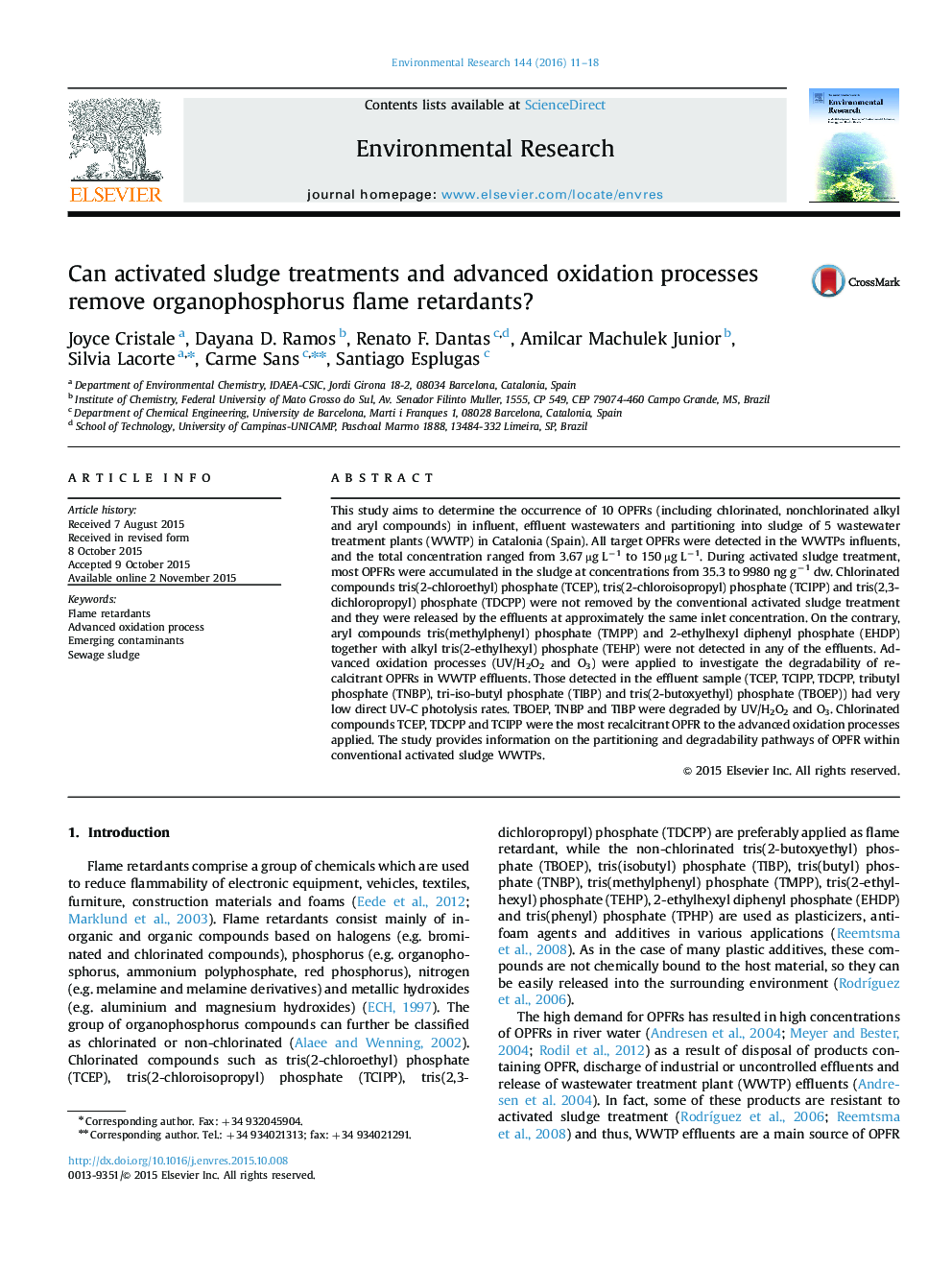| کد مقاله | کد نشریه | سال انتشار | مقاله انگلیسی | نسخه تمام متن |
|---|---|---|---|---|
| 4469655 | 1314296 | 2016 | 8 صفحه PDF | دانلود رایگان |
• OPFRs were detected in wastewater and sludge of all studied WWTPs.
• Alkyl and chloroalkyl phosphates were present in secondary treatment effluents.
• TBOEP, TNBP and TIBP were degraded by UV/H2O2 and O3 treatment.
• TCEP, TCIPP and TDCPP were resistant to both secondary and tertiary treatment.
This study aims to determine the occurrence of 10 OPFRs (including chlorinated, nonchlorinated alkyl and aryl compounds) in influent, effluent wastewaters and partitioning into sludge of 5 wastewater treatment plants (WWTP) in Catalonia (Spain). All target OPFRs were detected in the WWTPs influents, and the total concentration ranged from 3.67 µg L−1 to 150 µg L−1. During activated sludge treatment, most OPFRs were accumulated in the sludge at concentrations from 35.3 to 9980 ng g−1 dw. Chlorinated compounds tris(2-chloroethyl) phosphate (TCEP), tris(2-chloroisopropyl) phosphate (TCIPP) and tris(2,3-dichloropropyl) phosphate (TDCPP) were not removed by the conventional activated sludge treatment and they were released by the effluents at approximately the same inlet concentration. On the contrary, aryl compounds tris(methylphenyl) phosphate (TMPP) and 2-ethylhexyl diphenyl phosphate (EHDP) together with alkyl tris(2-ethylhexyl) phosphate (TEHP) were not detected in any of the effluents. Advanced oxidation processes (UV/H2O2 and O3) were applied to investigate the degradability of recalcitrant OPFRs in WWTP effluents. Those detected in the effluent sample (TCEP, TCIPP, TDCPP, tributyl phosphate (TNBP), tri-iso-butyl phosphate (TIBP) and tris(2-butoxyethyl) phosphate (TBOEP)) had very low direct UV-C photolysis rates. TBOEP, TNBP and TIBP were degraded by UV/H2O2 and O3. Chlorinated compounds TCEP, TDCPP and TCIPP were the most recalcitrant OPFR to the advanced oxidation processes applied. The study provides information on the partitioning and degradability pathways of OPFR within conventional activated sludge WWTPs.
Journal: Environmental Research - Volume 144, Part A, January 2016, Pages 11–18
